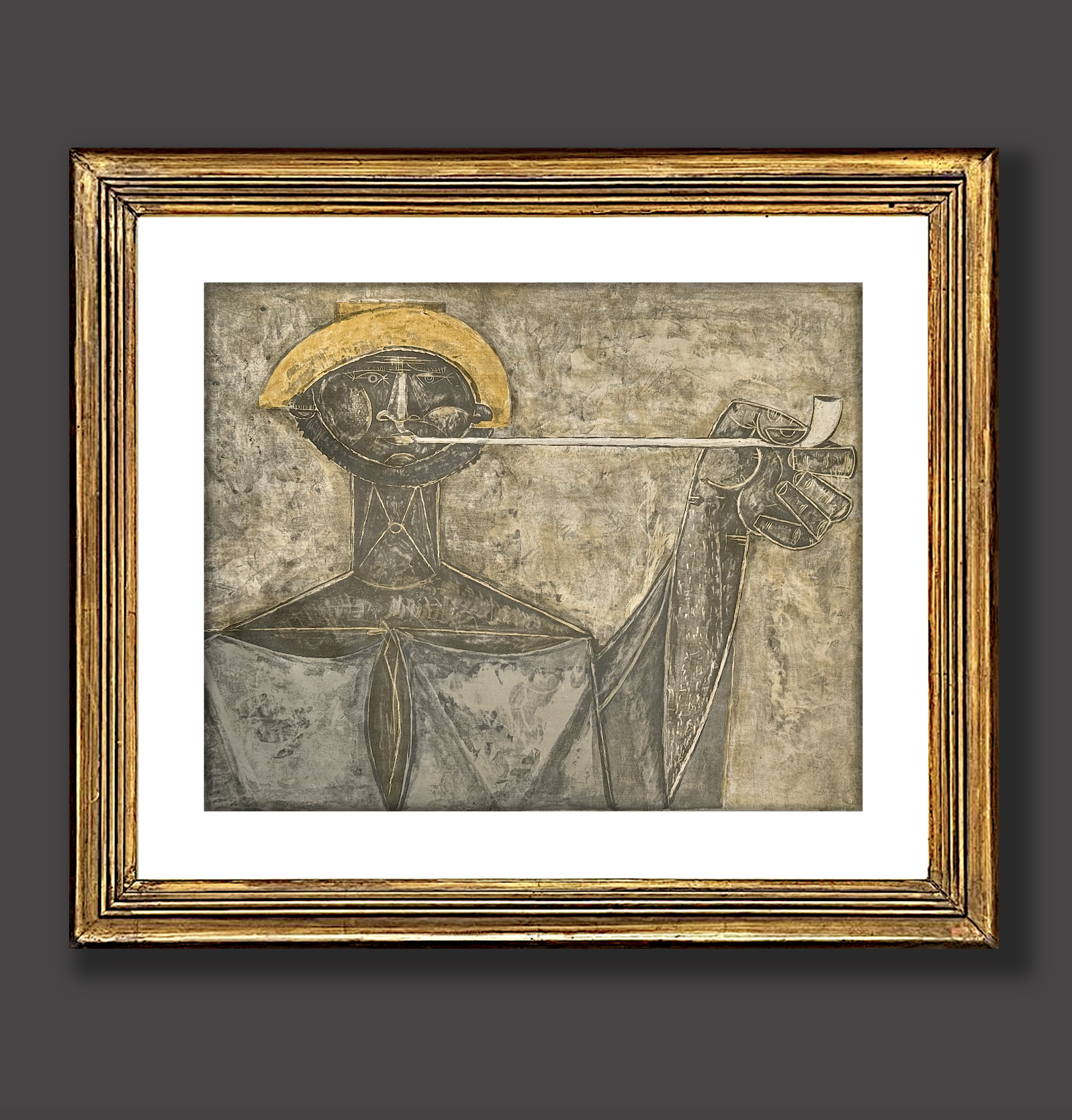

Title: Rare Mid-Century Picasso-Style Abstract Portrait, Figure on Paper
Shipping: $29.00
Artist: N/A
Period: 20th Century
History: Art
Origin: North America > United States
Condition: Good
Item Date: N/A
Item ID: 643
This post-war figure with a clay pipe is a work on paper that appears to be an original gouache painting, although the artist is unknown. The style is reminiscent of Picasso’s cubist approach. It could potentially be a serigraph or a monoprint, but the exact medium is difficult to determine. If this were an original Picasso painting, it could be valued in the tens of thousands, though no verification is currently possible as it is unsigned. The piece features a Picasso/cubist-style figure holding a long clay pipe, presented as a serigraph. The artwork is unsigned, measuring 14.5" x 18" and unframed. The abstract work is unsigned. The piece is unframed. Much like watercolor, gouache is a pigment that needs to be mixed with water to spread across paper or other surfaces. Gouache, also known as body color or opaque watercolor, is a water-based paint made from natural pigment, water, a binding agent, and sometimes inert materials. Unlike watercolor, gouache is designed to be opaque, with a matte finish, sitting between watercolor and acrylic paint in terms of texture and opacity. Gouache has been used for at least twelve centuries, making it a long-established medium. Even years after its initial application, gouache can be reactivated with water and worked on again. While gouache as a technique has existed for thousands of years, the term itself originated in 18th-century France, derived from the Italian painting technique “guazzo,” which produces a similar matte effect. This beautiful and very collectible work on paper is estimated and valued at over $800, and we will verify its availability upon your price inquiry. At BusaccaGallery.com, we vet all customers for transactions over $5,000 to ensure a secure and satisfactory experience for both parties. Please read the innovative story and watch the informative video we provide for each piece of these highly collectible works of art. If interested please contact us.
Pablo Picasso, Georges Braque, and Piet Mondrian played pivotal roles in the development of Cubism and abstraction in the early 20th century. Picasso and Braque, working closely together, co-founded Cubism, a revolutionary movement that fragmented objects into geometric shapes and depicted multiple perspectives simultaneously. This break from traditional representation challenged the norms of realism and influenced the trajectory of modern art. Mondrian, inspired by Cubism, further abstracted reality with his own style, known as Neoplasticism or De Stijl. He reduced objects to basic lines, grids, and primary colors, aiming for pure abstraction that conveyed a sense of order and harmony. Together, these artists transformed art by emphasizing form and structure over realistic representation, paving the way for modern abstraction. Abstraction in art emerged in the early 20th century as artists sought to break away from traditional representation and explore new forms of expression. Rooted in movements like Impressionism and Post-Impressionism, abstraction took a leap with pioneers such as Wassily Kandinsky, Kazimir Malevich, and Piet Mondrian, who moved away from depicting reality to focus on shapes, colors, and forms. Abstract art emphasized emotional expression, conceptual ideas, and the inner workings of the mind, rather than mimicking the physical world. Movements like Cubism, Abstract Expressionism, and Suprematism further developed abstraction, shaping modern art by challenging conventional perceptions of reality and emphasizing the subjective experience.